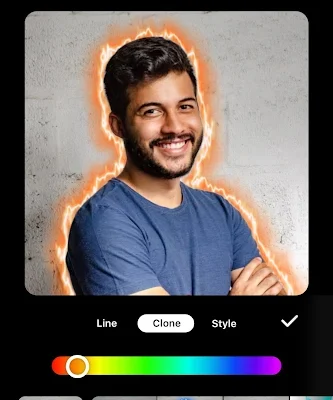InShot is a popular mobile app that makes video editing accessible to everyone. With its user-friendly interface, it’s perfect for beginners and professionals alike. If you’re looking to add Urdu captions to your videos using InShot, this guide will walk you through the steps. Whether you want to create content for YouTube, Instagram, TikTok, or personal use, these instructions will help you achieve a polished result.
Step 1: Install and Open the InShot App
- Download InShot: If you haven’t already, download the InShot app from the Google Play Store or Apple App Store.
- Open the App: Launch the app and choose Video from the main screen.
Step 2: Import Your Video
- Select Your Video: Tap on New to start a new project. You’ll be prompted to select a video from your gallery. Choose the video you want to edit.
- Trim and Cut: Before adding captions, you may want to trim or cut your video to the desired length. Use the Trim and Cut tools at the bottom of the screen.
Step 3: Add Urdu Captions
- Go to the Text Tool: Once your video is ready, tap on the Text option from the toolbar at the bottom.
- Type Your Urdu Text: To add Urdu captions, you need to install an Urdu keyboard on your phone. On Android, you can install the Gboard keyboard and select Urdu as the language. For iPhone users, go to Settings > General > Keyboard > Add New Keyboard and choose Urdu.
- Enter Urdu Text: With the Urdu keyboard activated, type your captions directly into the text box.
- Customize Text Appearance:
- Font Style: InShot offers various fonts. Choose one that supports Urdu characters. If the default fonts do not support Urdu, you can import custom fonts that do.
- Text Color: Select a color that contrasts with your video background to make the text readable.
- Positioning: Move the text box to your desired position on the screen by dragging it. You can place it at the bottom, top, or anywhere suitable.
- Text Size and Duration: Adjust the text size by pinching in or out on the screen. To set the duration for how long the text appears, drag the text layer on the timeline.
- Text Animation: If you want your captions to have motion, use the Animation feature to add effects like fade-in, fade-out, or slide.
Step 4: Review and Fine-tune
- Preview Your Video: Tap the play button to preview how the captions look within the video. Make sure they are clear and synchronized with the audio.
- Adjust Timing: If needed, adjust the timing of the captions by tapping on the text layer in the timeline and dragging it to the correct spot.
Step 5: Add More Captions (if needed)
- Repeat the steps to add multiple captions at different points in the video. You can layer them or place them sequentially, depending on your needs.
Step 6: Add Final Touches
- Filters and Effects: InShot offers a variety of filters and effects that can enhance your video. Explore these options to give your video a unique look.
- Music and Sound Effects: If you want to add background music or sound effects, go to the Music section. You can choose from InShot’s library or import your own audio files.
Step 7: Export Your Video
- Check Resolution and Quality: Before exporting, make sure to set the desired resolution (e.g., 1080p) and frame rate to maintain video quality.
- Export: Tap on the Save button at the top right corner. The app will render your video, which may take a few moments depending on the length and complexity.
- Share Your Video: Once the export is complete, you can directly share your video to social media platforms like YouTube, Instagram, WhatsApp, etc., or save it to your gallery.
Step 8: Backup Your Project
InShot doesn’t automatically save your projects, so make sure to back up your edited video before closing the app. You can do this by exporting the project to your device storage or cloud services.
Tips for Better Urdu Captions:
- Font Selection: Ensure that the font you choose supports the Urdu script properly. Experiment with different fonts to find one that looks good and is legible.
- Avoid Clutter: Keep your captions concise to avoid overwhelming your viewers. Focus on key points or translations.
- Background Contrast: Use a semi-transparent background behind the text if the video is too bright or cluttered to improve readability.
Conclusion:
Adding Urdu captions to your videos using InShot is a straightforward process, thanks to the app’s intuitive interface. By following these steps, you can enhance your video content and make it more accessible to Urdu-speaking audiences. Whether you’re creating educational content, vlogs, or social media posts, Urdu captions will add value and reach a broader audience.



